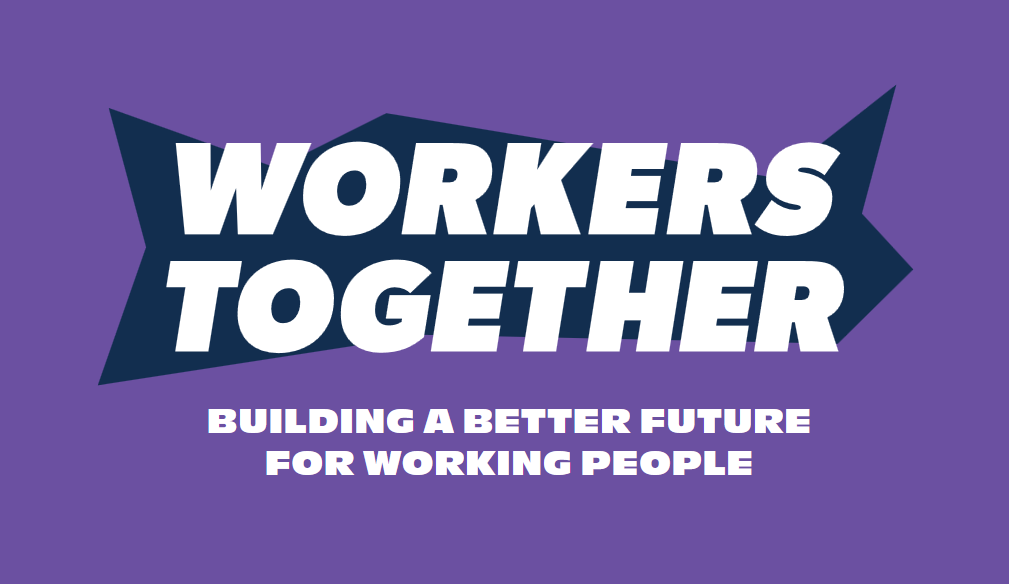This past Wednesday was International Women’s Day (IWD), a day to mark the political, economic and social achievements of women. It’s also a time to reflect on the various economic and labour issues that women continue to face.
After all, IWD emerged from the labour movement, with particular origin in the Socialist Party of America and early adoption by the Socialist Women’s Conference of the Second International. The Canadian labour movement has also come a long way in terms of its dedication to women’s and gender issues. Many unions devote permanent staff and resources to fighting for, protecting and expanding women’s rights, as well as those of LGBTQ2+ workers. Provincial and federal labour federations, along with local labour councils, also engage in public campaigns and political advocacy to improve the lives of women and gender-diverse workers.
Moreover, many Canadian unions and labour centrals are now led by women. Reform leaders were voted into power at Unifor and the Ontario Public Service Employees Union following scandals by previous leaders who were men. Both unions’ new leaders, Lana Payne and JP Hornick, have set a markedly more militant tone since assuming their leaderships. The entire Canadian Labour Congress executive is made up either of women or racialized people or both. Canada’s two largest provincial labour federations are led by women: Patty Coates in Ontario and Sussanne Skidmore in British Columbia.
These are noteworthy achievements. But they’re also reflective of the social composition of Canadian union members these days. A slight majority of union members are women and women are more likely to be union members than men. Thirty-one per cent of women are union members, compared to only 26 per cent of men.
Yet, it’s no time to rest on our laurels, particularly as governments pass laws to underpay care workers, largely women, and then fight them in court. Take, for example, a report released this week by the Canadian Centre for Policy Alternatives (CCPA). “Canada’s Gender Pandemic Response: Did It Measure Up?” examines the gender-sensitivity of the federal and provincial governments’ pandemic response policies and finds significant gaps and deficiencies.
The report’s author, CCPA senior researcher Katherine Scott, writes: “The scope and scale of the government response to the care crisis was wholly inadequate to the task, as millions of women stepped forward to take on the expanded care and educational needs of their families in the face [of] recurring public health [shutdowns]. Many not only lost income, they also struggled to access necessities and needed family and community supports. Marginalized women faced the greatest barriers, including women with disabilities, lone-parent mothers and precarious workers.”
Unsurprisingly, Scott finds that the federal government took up the majority of the slack when it came to gender-sensitive pandemic supports.
Roughly 30 per cent of federal emergency programs introduced between March 2020 and June 2021 were “gender-sensitive,” defined as “measures that addressed, in full or in part, gendered risks and challenges associated with the pandemic including increased violence, low income and precarity, and heightened care demands.” The study finds that the federal government spent approximately $42.6 billion on gender-sensitive programming, representing 11.6 per cent of its total pandemic expenditures.
The provinces, on the other hand, mostly fell short. While roughly 30 per cent of the 10 provincial government’s spending went to programming that addressed the gender impacts of the pandemic, the total amount devoted was much smaller: $13.6 billion.
Provincial spending was also highly uneven across the country, according to Scott’s research. On average, provinces spent $357 per person on gender-sensitive pandemic measures. The federal government, meanwhile, spent $1,155 per person. However, eight out of 10 provinces spent below the provincial average. Coming in dead last was Alberta — Canada’s richest province per capita — which spent only $50 per person on gender-sensitive relief. B.C. led with spending at $844 per person, while six out of the 10 provinces spent below $100 per person.
When it came to spending on gender-sensitive relief and programming, most provincial governments either waited for the federal government to take the lead or imposed the costs of the pandemic on working women through a lack of adequate support. As the CCPA report makes clear, had it not been for federal transfer payments and emergency spending, the pandemic’s impacts on women and families would have been disastrous.
Many others, including myself, have pointed out that the pandemic revealed both the deficiencies of our social safety net and what can be accomplished when governments are forced to act and spend on the supports and care that people need. The CCPA report offers its own important findings and recommendations in this vein, providing six policy takeaways that governments must heed if they wish to achieve anything resembling a “gender-just future.”
First, robust income supports were essential during the pandemic and they continue to be now. For those women disproportionately impacted by job loss and added caring responsibilities during the pandemic, federal income replacement benefits were a lifeline. Of course, all pandemic income benefits ceased long ago, as did the temporary measures introduced to make Employment Insurance payments more accessible. Because they’re more likely to experience precarious employment, women remain less likely to qualify for unemployment insurance, public pensions and other employment-related benefits. Fixing this mess is long overdue.
Second, the federal government directed pandemic aid to caregivers, acknowledging the economic and social value that this vital work creates. According to Scott, “Now is the time to take stock and consider systemic reform of the benefits on offer and related existing employment standards to better support caregiving across the life course.”
Third, the pandemic revealed the systematic under-investment in the care economy and the workers in it. Emergency interventions helped, but are no substitute for permanent reform and funding. Although movement on the childcare front is promising, if belated, very little has been done to raise the pay, standards and bargaining position of childcare workers as part of the new federal-provincial childcare funding arrangements, particularly in Ontario. Relatedly, and fourth, Scott argues that similar program funding arrangements between levels of government are needed in areas such as anti-violence programming.
Fifth, the pandemic demonstrated why it is so important to have a feminist lens and the capacity to develop policy that is geared toward gender justice. In part, this comes down to having the state capacity and infrastructure to track and gather relevant data, and to a willingness to put policy into practice.
Last, and perhaps most importantly, during the pandemic feminist organizations and coalitions “showed up” and put pressure on governments across the country. Were it not for the organized power of working women, governments’ responses would have been far less impactful. Labour, as well, had a hand in this mobilization. Certainly more could have been done, both to increase support for working women and caregivers and to rein in excessive support to employers, but the lesson for future fights is that organizing is obligatory.
That seems like an apt takeaway following IWD.







